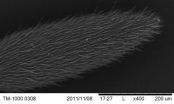(Press-News.org) Airborne wind energy—an emerging approach to harnessing high-altitude winds—could scale up fairly quickly if given significant government support for research and development, according to a survey of experts by Near Zero, a nonprofit energy research organization.
Winds near Earth's surface are already used to generate substantial amounts of electricity. However, higher in the sky—much higher than today's wind turbines can reach—winds tend to be stronger and steadier, making these winds an even larger source of energy. According to recent research, the amount of energy that can potentially be extracted from high-altitude winds is enormous. However, the field of airborne wind energy is still in its infancy and faces many challenges before it becomes commercially competitive.
Near Zero conducted both an informal discussion and a formal survey to find out what technologies are most advanced, which have the best potential, and how best government could jumpstart the development of the airborne wind energy industry. Thirty-one experts completed the formal survey, identifying technological, engineering, and regulatory barriers to testing airborne wind energy technologies and bringing the industry to large scale.
The results suggest that the airborne wind energy industry could grow quickly, as long as it receives a boost through government funding for R&D. During this initial stage of the industry's development, funding of $10 million per year could cut many years off how long it takes for the industry to reach a significant scale, and funding of $100 million per year would further accelerate the deployment of high-altitude wind generators, the experts said.
However, there are many barriers facing airborne wind energy. According to the results of the expert survey, the primary barrier is the reliability of the technologies, since airborne wind energy systems would have to remain aloft for long periods of time, in the face of shifting winds and changing weather.
The body of existing regulations is the second-highest barrier, posing a challenge both for testing prototypes today and for large-scale implementation in coming years, according to the survey. Thus regulations pose a challenge for rapid testing of various prototypes, to see which may be commercially viable.
The experts favored particular types of systems—those using rigid wings—and argued against putting large funding toward approaches using balloons. Some experts also suggested installing airborne wind energy systems offshore, in part because of the large wind resource available, and because regulatory and safety issues may be easier to resolve than for land-based systems.
INFORMATION:
Related new press release: "Enough wind to power global energy demand"
http://www.eurekalert.org/pub_releases/2012-09/ci-ewt090712.php
Near Zero is a non-profit organization based in Stanford, CA, founded to improve dialogue between energy experts and those who make and influence decisions about energy, in both government and business.
Decision makers often lack credible, impartial and timely sources of information that reflect the range of expert opinion. Through open discussions and formal surveys, Near Zero aims to find out what the top experts agree on—and where they disagree, the organization works to uncover the range of opinion and reasons for the differences. Near Zero's aim is to help find paths to reducing greenhouse gas emissions. The organization has no commitment to any particular technology or approach.
The full report—"Energy High in the Sky: Expert Perspectives on Airborne Wind Energy Systems"—is available from Near Zero's website, at:
http://www.nearzero.org/reports/AirborneWind/pdf/EnergyHighintheSky_Sept2012.pdf
High-altitude winds have large potential as a source of clean energy
A new survey of experts shows the promise of high-altitude wind energy, and the barriers to harnessing it
2012-09-11
ELSE PRESS RELEASES FROM THIS DATE:
Salt seeds clouds in the Amazon rainforest
2012-09-11
It's morning, deep in the Amazon jungle. In the still air innumerable leaves glisten with moisture, and fog drifts through the trees. As the sun rises, clouds appear and float across the forest canopy ... but where do they come from? Water vapor needs solid surfaces to condense on. Airborne particles are the seeds of liquid droplets in fog, mist, and clouds.
To learn how aerosol particles form in the Amazon, Mary Gilles of the Chemical Sciences Division at the U.S. Department of Energy's Lawrence Berkeley National Laboratory (Berkeley Lab) and David Kilcoyne of the Lab's ...
UF researchers name new cusk-eels useful for understanding environment
2012-09-11
GAINESVILLE, Fla. -- A study by University of Florida and University of Kansas researchers describing eight new cusk-eel species provides data for better understanding how disasters like the 2010 Gulf of Mexico oil spill impact biodiversity and the environment.
The 60-year study appearing Tuesday in the Florida Museum of Natural History Bulletin provides a comprehensive taxonomic revision of one of the least-studied groups of cusk-eels, bony fishes distantly related to cod. Although abundant and widespread in the Americas, the fishes in the genus Lepophidium have previously ...
GEN reports on ocular therapeutics targeting the retina
2012-09-11
New Rochelle, NY, September 10, 2012-- Therapies for retinal diseases are expected to overtake those for glaucoma by 2014, reports Genetic Engineering & Biotechnology News (GEN). Because current retinal disease treatments only improve vision for six to eight weeks, there is a critical need for new remedies, according to a recent issue of GEN.
"As increasing numbers of baby-boomers continue to grow older, many will have to deal with eye diseases such as age-related macular degeneration," said John Sterling, Editor-in-Chief of GEN. "Some estimates put the current AMD and ...
Pain drug can kill resistant tuberculosis
2012-09-11
NEW YORK (September 10, 2012) -- An off-patent anti-inflammatory drug that costs around two cents for a daily dose in developing countries has been found by researchers at Weill Cornell Medical College to kill both replicating and non-replicating drug resistant tuberculosis in the laboratory -- a feat few currently approved TB drugs can do, and resistance to those is spreading.
Their findings, published online by the journal PNAS, point to a potential new therapy for the more than 500,000 people worldwide whose TB has become resistant to standard drug treatments. But ...
Rhode Island Hospital study shows wine has more cardiovascular benefits than vodka
2012-09-11
PROVIDENCE, R.I. – The next time you call someone a drunken pig, remember this study. Rhode Island Hospital researcher Frank Sellke, M.D., chief of cardiothoracic surgery at Rhode Island and The Miriam hospitals, and his colleagues studied the effects of red wine and vodka on pigs with high cholesterol and found that the pigs with a penchant for pinot noir fared better than their vodka swilling swine counterparts. The paper is published in the September issue of the journal Circulation.
"There has been previous research touting the benefits of moderate consumption of ...
Ants have an exceptionally 'hi-def' sense of smell
2012-09-11
Ants have four to five times more odor receptors than most other insects, a team of researchers have discovered.
The research team, led by Lawrence Zwiebel at Vanderbilt, recently completed the first full map of olfactory system that provides ants with their sense of taste and smell. They found the industrious insects have genes that make about 400 distinct odorant receptors, special proteins that detect different odors. By comparison, silk moths have 52, fruit flies have 61, mosquitoes range from 74 to 158 and honeybees have 174.
"The most exciting moment for me was ...
Researchers find 2 gene mutations drive adrenal cancer
2012-09-11
This press release is available in Portuguese.
ANN ARBOR, Mich. — Two different genetic mutations cooperate to induce adrenal cancer, according to a new study from researchers at the University of Michigan Comprehensive Cancer Center and University of Sao Paulo in Brazil.
The finding provides new clues to this rare and deadly cancer type, and researchers hope it will lead to better treatments by targeting both mutations.
About 600 Americans are diagnosed with adrenal cancer per year. It is typically diagnosed in late stages when there is nearly no chance of survival ...
CWRU nurse researchers find effort takes its toll on unpaid family caregivers
2012-09-11
According to AARP, the annual cost of unpaid elder caregiving – work that falls mainly on the backs of family members – runs about $450 billion.
While some companies document the physical and emotional toll that the workplace takes on their employees, exactly how draining caregiving might be has never really been measured.
So Case Western Reserve University nurse researchers studied it.
"Without knowing the impact of effort, we have two vulnerable people at risk for health issues—the caregiver and the care receiver," said Evanne Juratovac, assistant professor at ...
'Civilian cyber-warriors' not driven by patriotism
2012-09-11
EAST LANSING, Mich. -- People who commit cyber-attacks against the government also tend to download music illegally and participate in physical protests. Surprisingly, however, they don't appear to be acting out of some sense of national pride or patriotism.
Those are some of the findings to emerge from a Michigan State University study that for the first time begins to paint a profile of "civilian cyber-warriors," or people who engage in attacks against domestic or foreign governments. Cybercrimes pose a huge societal risk and have become a hot issue globally, yet little ...
Study ties forest 'greenness' in western US to snowpack extent
2012-09-11
Results of a new study tie forest "greenness" in the western United States to fluctuating year-to-year snowpack extent.
The results show that mid-elevation mountain ecosystems are the most sensitive to rising temperatures and to changes in precipitation and snowmelt.
University of Colorado-Boulder scientist Noah Molotch and colleagues used satellite images and ground measurements to identify the threshold at which mid-level forests sustained by moisture change to higher-elevation forests sustained by sunlight.
A paper reporting the results was published yesterday ...
LAST 30 PRESS RELEASES:
Making lighter work of calculating fluid and heat flow
Normalizing blood sugar can halve heart attack risk
Lowering blood sugar cuts heart attack risk in people with prediabetes
Study links genetic variants to risk of blinding eye disease in premature infants
Non-opioid ‘pain sponge’ therapy halts cartilage degeneration and relieves chronic pain
AI can pick up cultural values by mimicking how kids learn
China’s ecological redlines offer fast track to 30 x 30 global conservation goal
Invisible indoor threats: emerging household contaminants and their growing risks to human health
Adding antibody treatment to chemo boosts outcomes for children with rare cancer
Germline pathogenic variants among women without a history of breast cancer
Tanning beds triple melanoma risk, potentially causing broad DNA damage
Unique bond identified as key to viral infection speed
Indoor tanning makes youthful skin much older on a genetic level
Mouse model sheds new light on the causes and potential solutions to human GI problems linked to muscular dystrophy
The Journal of Nuclear Medicine ahead-of-print tip sheet: December 12, 2025
Smarter tools for peering into the microscopic world
Applications open for funding to conduct research in the Kinsey Institute archives
Global measure underestimates the severity of food insecurity
Child survivors of critical illness are missing out on timely follow up care
Risk-based vs annual breast cancer screening / the WISDOM randomized clinical trial
University of Toronto launches Electric Vehicle Innovation Ontario to accelerate advanced EV technologies and build Canada’s innovation advantage
Early relapse predicts poor outcomes in aggressive blood cancer
American College of Lifestyle Medicine applauds two CMS models aligned with lifestyle medicine practice and reimbursement
Clinical trial finds cannabis use not a barrier to quitting nicotine vaping
Supplemental nutrition assistance program policies and food insecurity
Switching immune cells to “night mode” could limit damage after a heart attack, study suggests
URI-based Global RIghts Project report spotlights continued troubling trends in worldwide inhumane treatment
Neutrophils are less aggressive at night, explaining why nighttime heart attacks cause less damage than daytime events
Menopausal hormone therapy may not pose breast cancer risk for women with BRCA mutations
Mobile health tool may improve quality of life for adolescent and young adult breast cancer survivors
[Press-News.org] High-altitude winds have large potential as a source of clean energyA new survey of experts shows the promise of high-altitude wind energy, and the barriers to harnessing it






